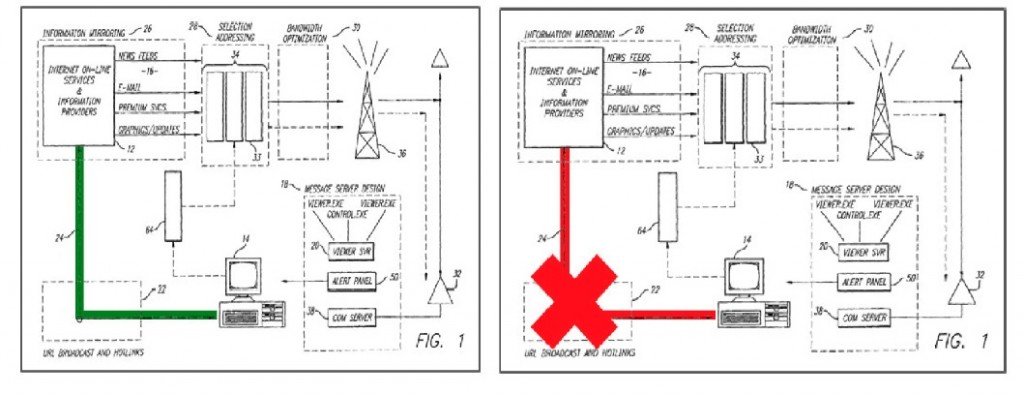In Simpleair, Inc. v. Sony Ericsson Mobile Communications AB, [2015-1251] (April 1, 2016), the Federal Circuit vacated the jury verdict of infringement, and remanded with instructions to enter judgment of non-infringement. At issue was the meaning of “data channel” in U.S. Patent No. 7,035,914 directed to a system and method for transmission of data.
Critical to infringement is whether a data channel was on line or off line. Google presented some compelling simple diagrams showing the meaning on-line and offline, while Simpleair maintained that the district court correctly found that a channel simply meant a path for viewing a category of information, rather than the entire connection. The Federal Circuit found the district court’s construction was “incorrect”.
The Federal Circuit noted that while “interpretations that render some portion of the
claim language superfluous are disfavored . . . [t]he preference for giving meaning to all terms, however, is not an inflexible rule that supersedes all other principles of claim construction.” The Federal Circuit reiterated that that claims must always be read
in light of the specification, and in addition must be given meaning consistent with how they would have been understood at the time of invention by a person having ordinary skill in the art.
Looking to the specification, the Federal Circuit found a PHOSITA at the time of invention would understand that a key aspect of the invention is the ability of a remote device to receive notifications even when it is not connected to the Internet by traditional means. The Federal Circuit further noted that the invention contemplates two distinct paths, which was consistent with Google’s interpretation, and contrary to the district court’s interpretation.
The Federal Circuit also rejected the argument that data channel should be construed to mean data feed, pointing out that data channel was a term added by amendment and used no where else in the specification, while data feed is a term used in the specification and claims. The Federal Circuit said the choice to use “data channel” in claim 1 rather than “data feed,” notwithstanding use of the latter elsewhere in the patent, lends further support to the conclusion that “data feed” does not carry the same meaning as “data channel.”
Under the correct construction, the Federal Circuit agreed that the claims could not be infringed, and vacated the judgment and remanded the case for entry of a judgment of non-infringement.
Four canons of claim construction contributed to the construction in this case, including (1) every word in a claim should be given effect; (2) claims must always be read in light of the specification; (3) claims must be given meaning consistent with how they would have been understood at the time of invention by a person having ordinary skill in the art; and (4) different words in the claims should be given different meanings’ Although giving effect to every word in a claim was downgraded to a “preference”.

